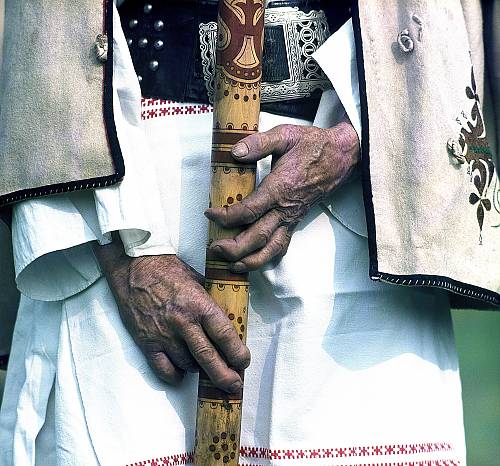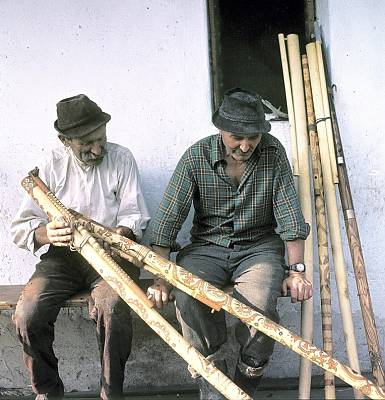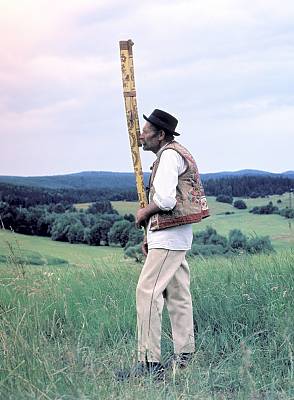Fujara and its music
Inscribed in 2008 (3.COM) on the Representative List of the Intangible Cultural Heritage of Humanity (originally proclaimed in 2005)

The Fujara, an extremely long flute with three finger holes traditionally played by Slovak shepherds, is regarded as an integral part of the traditional culture of Central Slovakia. It is not just a musical instrument, but also an artefact of great artistic value due to its highly elaborate, individual ornamentation.
The main tube of the flute measures 160 to 200 cm in length and is connected to a shorter tube of 50 to 80 cm. The instrument is characterized by deep “mumbling” tones, emitted by its lower register and very high overtones made possible by the length of the instrument. The melancholic and rhapsodic music varies according to the content of the songs, related to the shepherds’ life and work. The musical repertoire is based on melodies determined by the technical features of the instrument and sounds imitating nature, such as the gurgle of a stream or a wellspring.
In the course of the nineteenth and twentieth centuries, the Fujara became known and appreciated beyond the shepherds’ use. Through festivals, the instrument played by musicians from the Podpol’anie region gained recognition and popularity throughout Slovakia.The Fujara is played at various occasions throughout the year, but mainly from spring to autumn, by professional musicians and a few remaining shepherds performing at festivals.
During recent decades the Fujara is increasingly played at special events. The communist era and the political developments in the 1990s have caused significant social, cultural and economic changes and especially young people have become estranged from traditional folk art. Individual initiatives, however, have been trying to safeguard the Fujara and the knowledge and skills related to it.







